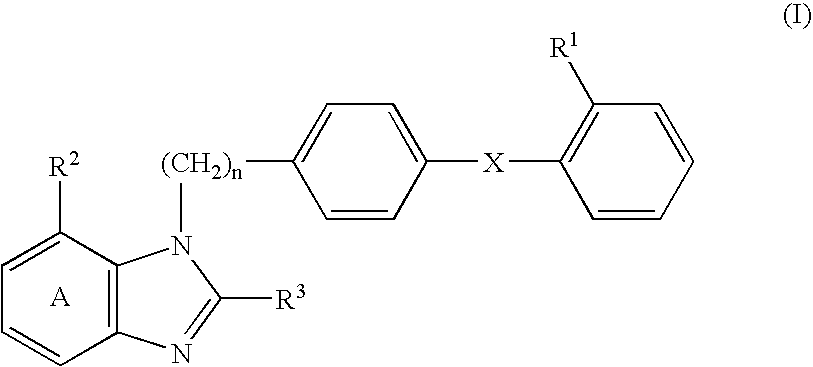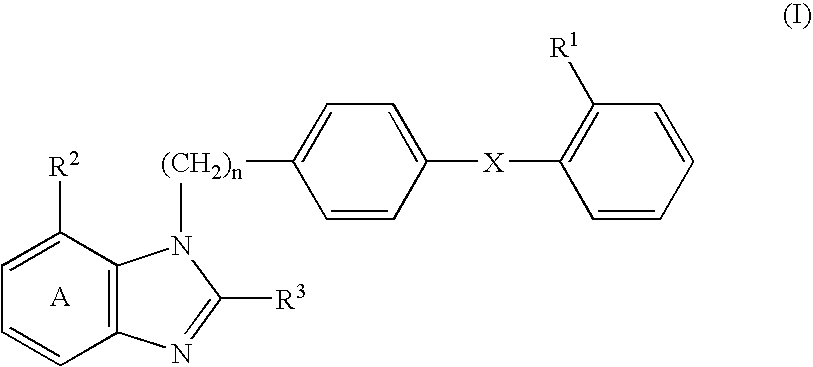Agent for preventing recurrence of cerebrovascular disorder and agent for ameliorating troubles following cerebrovascular disorder and inhibiting progress thereof
a technology of agent and agent, applied in the direction of cardiovascular disorder, biocide, drug composition, etc., can solve the problems of reducing the effect of blood pressure, affecting the treatment effect, so as to prevent the recurrence of cerebrovascular disorder, inhibit the progression of the disease, and improve the effect of troubles
- Summary
- Abstract
- Description
- Claims
- Application Information
AI Technical Summary
Benefits of technology
Problems solved by technology
Method used
Image
Examples
example 1
Capsules
[0110]
(1) Candesartan cilexetil 30 mg(2) Lactose 90 mg(3) Crystalline cellulose 70 mg(4) Magnesium stearate 10 mg1 capsule200 mg
[0111] (1), (2), (3) and ½ of (4) are mixed, kneaded and granulated. The remainder of (4) is added thereto, and the whole is encapsulated in a gelatin capsule.
example 2
Tablets
[0112]
(1) Candesartan cilexetil 30 mg(2) Lactose 35 mg(3) Corn starch150 mg(4) Crystalline cellulose 30 mg(5) Magnesium stearate 5 mg1 tablet250 mg
[0113] (1), (2), (3), ⅔ of (4) and ½ of (5) are mixed, kneaded and granulated. The remainders of (4) and (5) are added to the granules which are then molded into a table by compression.
experimental example 1
Action of Candesartan Cilexetil in Ameliorating Troubles Following Cerebrovascular Disorder in Spontaneous Hypertension Rat with Ease Spontaneous Cerebral Apoplexy (SHRSP)
[0114] Method:
[0115] Male SHRSP are used. SHRSP are separately raised and given 1% saline solution as drinking water to promote and regulate occurrence of cerebral apoplexy. To regulate apoplexy symptoms, rats expressing the non-voluntary motility of raising the foreleg are divided one after another into a control group and a drug administration group. After the first fit, the drinking water is replaced by tap water, and then nerve symptoms are observed. During observation, the rats are examined for severity of nerve symptoms and for change in their weight. After the final administration, the rats are allowed to bleed to death under anesthesia and subjected to histological investigation.
PUM
| Property | Measurement | Unit |
|---|---|---|
| volume | aaaaa | aaaaa |
| cerebral blood flow rate | aaaaa | aaaaa |
| blood pressure | aaaaa | aaaaa |
Abstract
Description
Claims
Application Information
 Login to View More
Login to View More - R&D
- Intellectual Property
- Life Sciences
- Materials
- Tech Scout
- Unparalleled Data Quality
- Higher Quality Content
- 60% Fewer Hallucinations
Browse by: Latest US Patents, China's latest patents, Technical Efficacy Thesaurus, Application Domain, Technology Topic, Popular Technical Reports.
© 2025 PatSnap. All rights reserved.Legal|Privacy policy|Modern Slavery Act Transparency Statement|Sitemap|About US| Contact US: help@patsnap.com



